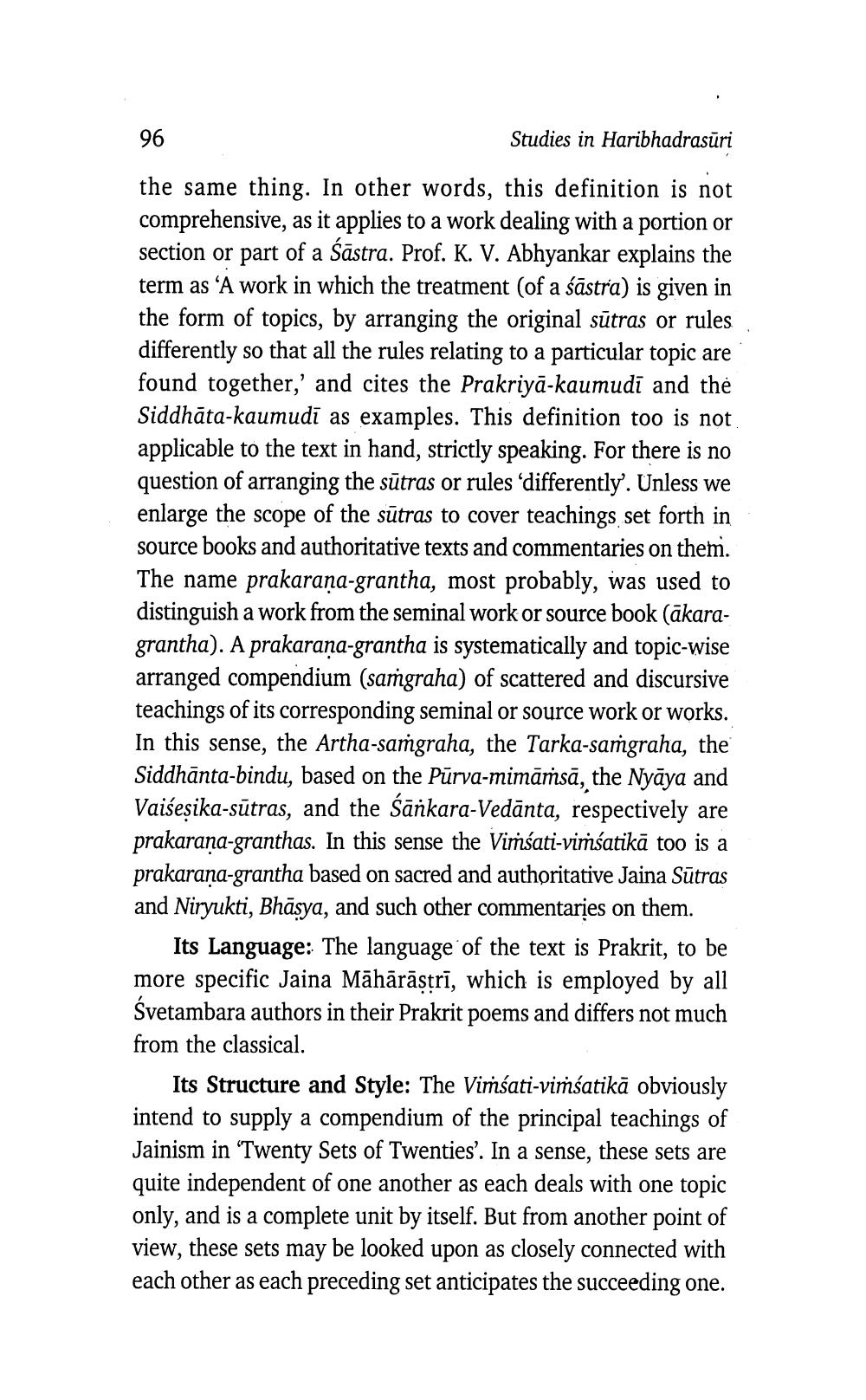________________
96
Studies in Haribhadrasuri
the same thing. In other words, this definition is not comprehensive, as it applies to a work dealing with a portion or section or part of a Sāstra. Prof. K. V. Abhyankar explains the term as ‘A work in which the treatment (of a śāstra) is given in the form of topics, by arranging the original sūtras or rules differently so that all the rules relating to a particular topic are found together,' and cites the Prakriyā-kaumudi and the Siddhāta-kaumudī as examples. This definition too is not applicable to the text in hand, strictly speaking. For there is no question of arranging the sūtras or rules differently'. Unless we enlarge the scope of the sūtras to cover teachings set forth in source books and authoritative texts and commentaries on them. The name prakaraña-grantha, most probably, was used to distinguish a work from the seminal work or source book (ākaragrantha). A prakarana-grantha is systematically and topic-wise arranged compendium (samgraha) of scattered and discursive teachings of its corresponding seminal or source work or works. In this sense, the Artha-samgraha, the Tarka-saṁgraha, the Siddhānta-bindu, based on the Pūrva-mimāṁsā, the Nyāya and Vaiseșika-sūtras, and the Sārkara-Vedānta, respectively are prakarana-granthas. In this sense the Vimsati-vimsatikā too is a prakarana-grantha based on sacred and authoritative Jaina Sūtras and Niryukti, Bhāsya, and such other commentaries on them
Its Language: The language of the text is Prakrit, to be more specific Jaina Māhārāstrī, which is employed by all Svetambara authors in their Prakrit poems and differs not much from the classical.
Its Structure and Style: The Viṁśati-viṁsatikā obviously intend to supply a compendium of the principal teachings of Jainism in 'Twenty Sets of Twenties'. In a sense, these sets are quite independent of one another as each deals with one topic only, and is a complete unit by itself. But from another point of view, these sets may be looked upon as closely connected with each other as each preceding set anticipates the succeeding one.




